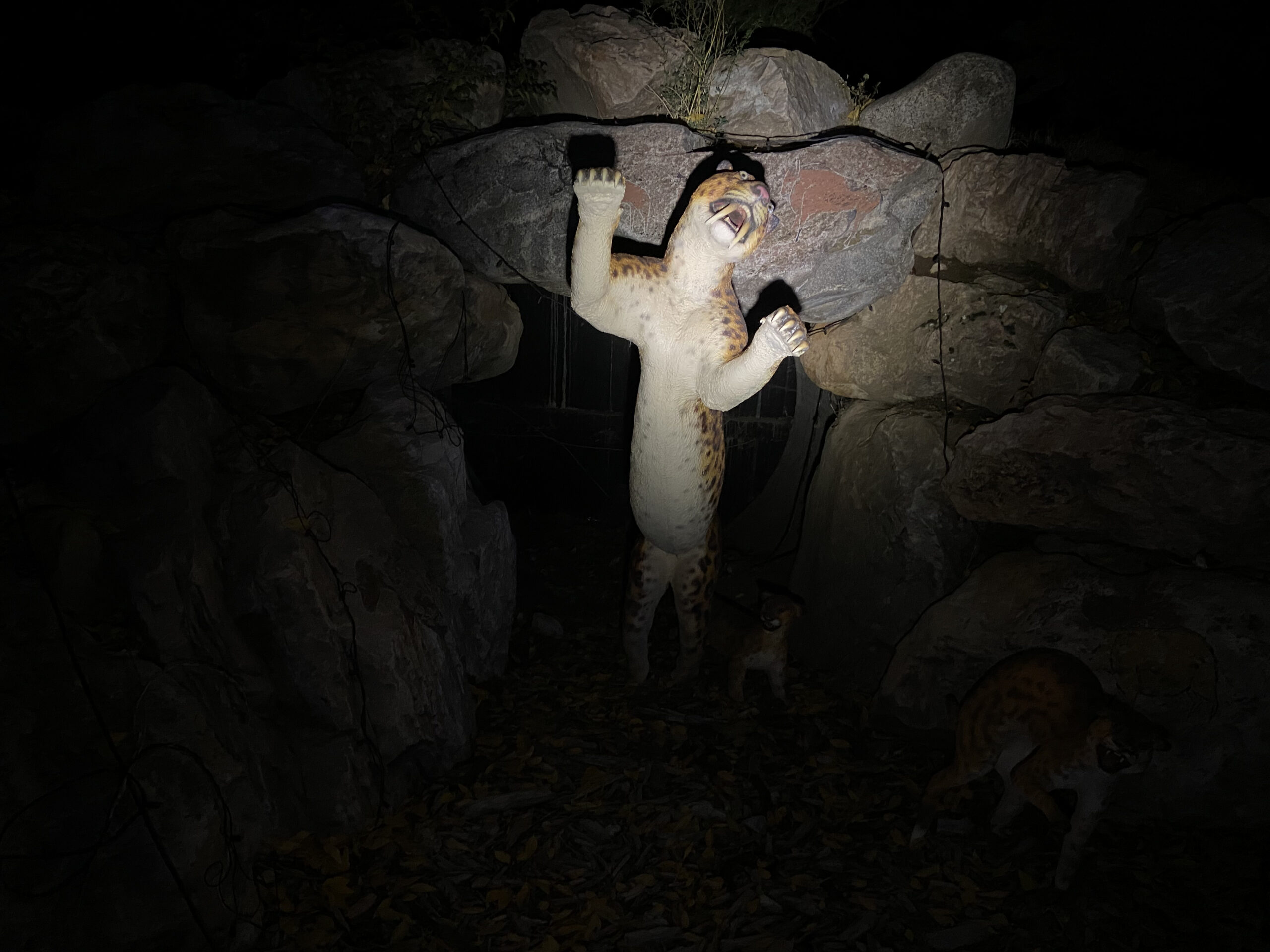
Profile (and extended sign text)
True to Life?
Species: gracilis, fatalis, populator
Range: Quaternary (Pleistocene, 1.8 MYA—12,000 YA) from United States, Central and South America
Size estimate: 5-7 ft length, 120-880 lbs
Discovery: Joseph Leidy, 1877
Classification: synapsida, mammalia, carnivora, felidae, machairodontidae
People often call this cat a saber-toothed tiger. But Smilodon and other members of the machairodont family were not closely related to tigers. Modern cats and the sabertooths diverged from a common ancestor roughly 14 million years ago. The title “saber-toothed cat” better describes the animal in terms of its pedigree. They may look similar, but the term “tiger” only fits as well as “saber-toothed lion” or “saber-toothed jaguar.”
The massive, bizarre fangs of these cats could measure up to 11 inches long in the biggest species, Smilodon populator. They grew even longer than a Tyrannosaurus rex’s teeth, which measured 9 inches at most. About 1/3 of the length of a Smilodon’s fangs would have been embedded in the skull to keep them rooted. Unlike Tyrannosaurus, Smilodon could not grow new teeth if one broke.
The fangs’ length corresponds with a wider gape for Smilodon’s jaws. Modern lions can only open their mouth about 60˚, but Smilodon could achieve a snake-like 120˚. To accommodate such an extreme hinge, its jaw muscles were reduced, giving it a much weaker bite than modern big cats. Recent studies suggest, however, that they may have made up for smaller biting muscles with a special biting technique. When biting, they may have used their necks and forelimbs to help drive the fangs into their prey. The blade-like shape of these fangs and the unusual presence of serrations may also indicate a slashing function. As intimidating as they look, the size and shape of the fangs may have subjected them to greater stresses, leading to increased breakage.
The famous Rancho La Brea tar pits in Los Angeles have preserved thousands of Smilodon bones. Evidence from these fossils and others has led to debates over Smilodon’s social life, behavior, and how to restore them accurately. It is possible that different species of Smilodon may have adopted radically different behaviors. A modern cat genus, Panthera, includes lions, tigers, leopards, jaguars, and snow leopards. Each of these species displays a surprising range of fur coloration, hunting styles, and social behavior. Perhaps different species of Smilodon showed a similar range of diversity. If so, different theories proposed for Smilodon may prove correct in one species but not in another.
Since no one has ever seen a living dinosaur, and the missing pieces of the fossil record withhold important clues to their appearance, no artistic representation of a dinosaur ever gets it 100% right. On top of that, new discoveries can change our ideas of extinct creatures drastically. So, how close does this sculpture come to what we know of the original animal?
Subscribe to our newsletter of follow us on the social channels to stay tuned.
© 2023 Dinosaur Park • All Rights Reserved.
We are closed December 22- January 6 for annual cleaning.